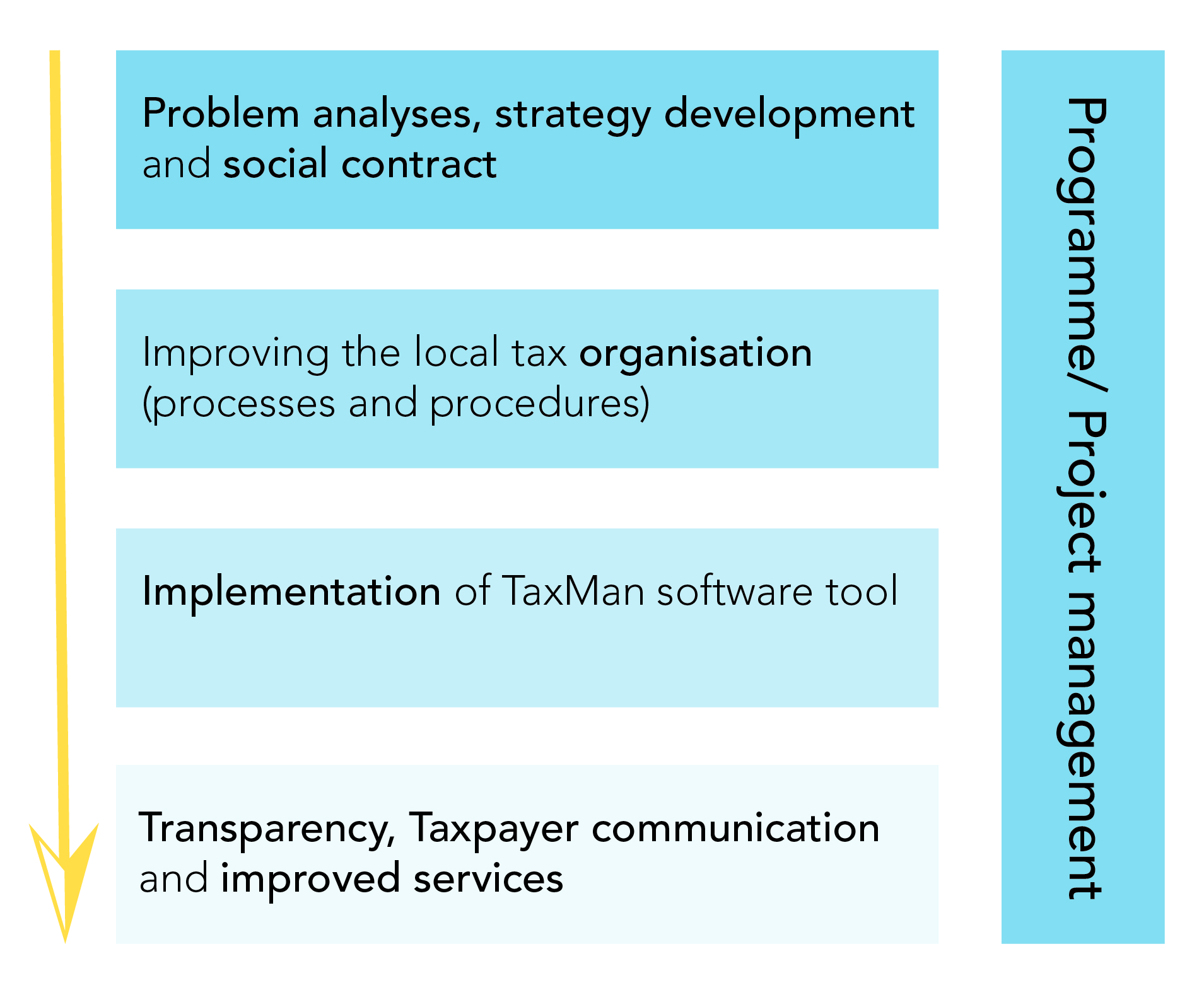 Our methodology is based on research findings from the Erasmus University in Rotterdam, amongst others. Traditionally, many Western approaches in these issues come down to a valuation-pushed implementation strategy. This approach has the disadvantage that all data (values, ownership, location) should be put in place before starting the billing and collection process. In most cases, it takes 5 to 10 years before the actual tax collection can take place.
Our methodology is based on research findings from the Erasmus University in Rotterdam, amongst others. Traditionally, many Western approaches in these issues come down to a valuation-pushed implementation strategy. This approach has the disadvantage that all data (values, ownership, location) should be put in place before starting the billing and collection process. In most cases, it takes 5 to 10 years before the actual tax collection can take place.
Instead, we have developed a revenue collection-led strategy, which places priority on improving the processes of collection of revenue and enforcement. This revenue collection-led strategy recognizes that the “revenue collection” function is what “realizes” the most important objectives of revenue collection: revenue, equity, efficiency and accountability. In our strategy, the data collection (e.g. fiscal cadaster information and property valuations) are seen as complementary and successive to the revenue collection process. In our projects, tax collection starts within 12 to 18 months since the start of the project.
We built our methodology on five different pillars:
- Assisting municipalities and the responsible Ministries in the development of a shared strategy to improve both revenue collection and the delivery of services.
- Improved revenue collection procedures necessary to become a good (local) tax administration, including modernisations such as indexing of property values, zonal approach, e-bill delivery, e-payments and improved enforcement. Develop and implement a sustainable and spending funding cycle in which municipalities are transparent on how revenues will be spent.
- Development and implementation of easy to use, easy to implement, billing and collection software to facilitate effective revenue management and decrease the risks of leakages and fraud;
- Improved mass- and inter-personal communication with citizens; Citizens involvement in funding and spending cycle to prioritise services.
- Management support in all phases to ensure sustainability after the project had finished.
One of the most effective, just and fast methods to levy local taxation is the introduction or improvement of a form of property tax.
Some of the challenges faced by (local) governments in establishing a functioning property tax process are:
- Absence of property registration and an updated valuation of properties.
- Inability to access information about property valuations due to the high cost of these services.
- No reliable databases (e.g., absence of street names or property addresses) to make billing and collection efficient.
- Handwritten bills, which is time consuming and can result in revenue leakages.
- Uneven leadership commitment and political interference that hinder revenue mobilisation and collection.
- Local government employees receive no training programmes pertaining to data collection, bill delivery, debt management, communications and social skills.


 Our methodology is based on research findings from the Erasmus University in Rotterdam, amongst others.
Our methodology is based on research findings from the Erasmus University in Rotterdam, amongst others.